TOKYO — Varda Space Industries, a company developing spacecraft for microgravity life sciences and hypersonics research, has raised $187 million to expand the scope and cadence of its missions.
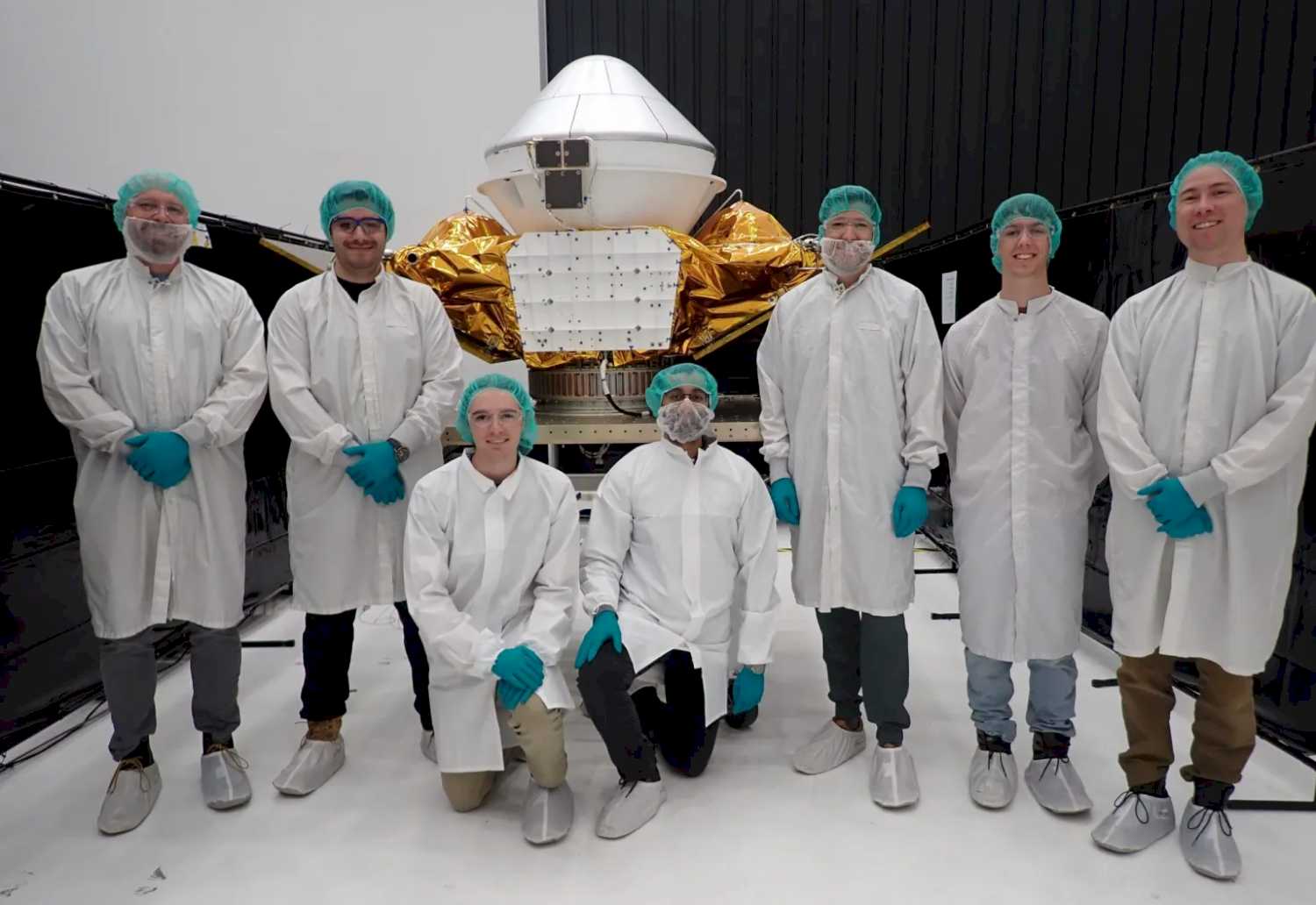
TOKYO — Varda Space Industries, a company developing spacecraft for microgravity life sciences and hypersonics research, has raised $187 million to expand the scope and cadence of its missions.

View 216 times
Although few details are known, these initiatives in Africa mark an expansion in U.S. efforts to deport people to countries other than their own. The United States has sent hundreds of Venezuelans and others to Costa Rica, El Salvador and Panama but has yet to announce any major deals with governments in Africa, Asia or Europe.
While proponents see such programs as a way of deterring what they describe as unmanageable levels of migration, human rights advocates have raised concerns over sending migrants to countries where they have no ties or that may have a history of rights violations.
Last year, U.K. Supreme Court ruled that a similar plan to deport rejected asylum-seekers to Rwanda was illegal.
Trump meets with West African leaders
Earlier this week, Trump held a summit with five West African leaders in the White House, which highlighted the new transactional U.S. policy towards the continent.
Trump discussed migration with the leaders of Liberia, Senegal, Guinea-Bissau, Mauritania and Gabon, including the need for countries to accept the return of their nationals who do not have the right to stay in the U.S., as well as the possibility of accepting deported nationals of third countries.
U.S. border tsar Tom Homan told the media Friday that the Trump administration hopes to forge deals with “many countries” to accept deported migrants.
“If there is a significant public threat or national security threat — there’s one thing for sure — they’re not walking the streets of this country. We’ll find a third, safe nation to send them to, and we’re doing it," he said.
What African leaders are saying
Liberian President Joseph Boakai told media in Liberia on Friday that third-country nationals were discussed but that Trump had not directly asked Liberia to accept such deportees.
“They’re not forcing anybody, but they want us to know that this is the concern they have, and they are asking how can we contribute, how can we help?” he said.
President Umaro Sissoco Embaló of Guinea Bissau said Trump discussed the topic during the summit, but did not specifically ask for the African nations to agree to accept deportees. Other West African governments did not reply to a request for comment.
Nigeria’s Foreign Minister Yussuf Tuggar, meanwhile, said such conversations were being held between U.S. representatives and several African countries, though he declined provide details.
He said late Thursday that Nigeria would not bow to what he described as pressure to accept third-country deportees, saying the country had enough problems of its own.
What’s in it for African countries
Experts say some African countries may seek to facilitate U.S. deportation programs in order to earn good will in negotiations over tariffs, cuts in U.S. aid or visa restrictions that have hit several African countries in recent months.
Beverly Ochieng, an analyst at the security consulting firm Control Risks, said countries may want to reach a migrant deal to avoid a situation “where they lose access to the U.S. economy or economic initiatives and bilateral relations.’
Those factors are especially important, “in light of the withdrawal of developmental aid,” Ochieng told The Associated Press.
What has been done so far
So far, the only African country to accept third-country deportees from the U.S. has been South Sudan, which accepted eight deportees with criminal convictions, only one of whom was from South Sudan.
It is unclear what deal may have been struck between the two countries. The South Sudanese Foreign Ministry has declined to answer questions.
Alan Boswell, the Horn of Africa program director at the International Crisis Group think tank, said the South Sudan would have “a number of reasons to want to placate a Trump administration, be that avoiding visa bans, warding off more sanctions against its elite, or generally trying to curry favor.”
The decision has drawn criticism from South Sudanese civil society and some members of government. “South Sudan is not a dumping ground for criminals,” said Edmund Yakani, a prominent civil society leader in the country.
Homan, the U.S. border tsar, said Friday he was unsure of the situation of the eight men, saying they were no longer in U.S. custody.
Rwanda’s foreign minister told the AP last month that talks were under way with the U.S. about a potential agreement to host deported migrants, without providing details. The U.S. State Department declined to comment on a potential deal. Rights groups have long criticized Rwanda for their human rights record, especially the deaths in Rwandan custody of some perceived government critics.
The U.K. struck a deal with Rwanda in 2022 to send migrants who arrive in the U.K. as stowaways or in boats to the East African country, where their asylum claims would be processed and, if successful, they would stay. But the plan was stalled by legal challenges and criticized by human rights groups.
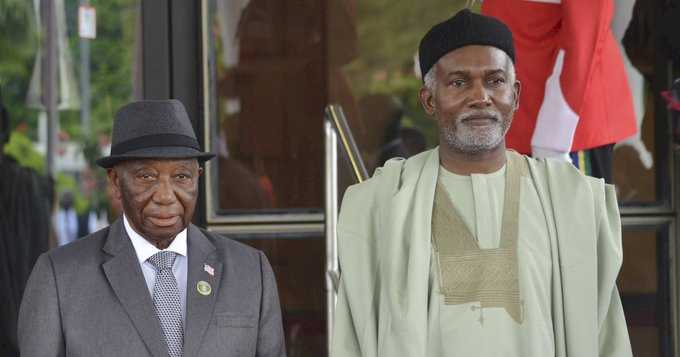
View 213 times
The current leaders in Europe have neglected the lessons of history as they are once again attempting to mobilize the continent for a war against Russia, Russian Foreign Minister Sergey Lavrov stated at a press conference following events along the lines of the Association of Southeast Asian Nations (ASEAN) in Kuala Lumpur.
The United States and its allies continue staging provocations against North Korea, Lavrov noted. Also, he summarized his meeting with US Secretary of State Marco Rubio.
TASS has compiled key highlights from his statements.
Meeting with Rubio
The future of the New START Treaty was not discussed at a meeting with Rubio in Kuala Lumpur.
Instead, Lavrov and Rubio talked Ukraine. "We discussed Ukraine, and we reiterated the position that President [of Russia Vladimir] Putin has articulated, including during his conversation with President [of the United States Donald] Trump on July 3," Lavrov said.
Russia’s top diplomat refused to comment on Rubio’s remarks about the latest plan on Ukraine, saying "there are matters that cannot be commented on."
The two top diplomats did not discuss claims by CNN around audio recordings of remarks by Trump at an event last year when he allegedly threatened to bomb Moscow. "As for this dialogue, leak, recording, I don’t know whether it’s by a neural network or not, but, after all, we were discussing serious issues."
Militarization in Europe, Merz’s position
Russia will take the policy course toward militarization being pursued by Europe into account in all aspects of its planning, Lavrov said.
"Recent statements and actions from Berlin, Paris, and London show that the latest generation of politicians who came to power in these and a number of other countries have forgotten the lessons of history, have disregarded the conclusions the entire humankind has drawn from those lessons, as they are actually once again attempting to raise Europe for war, not a hybrid war this time around, but a full-scale war on Russia," the foreign minister noted.
Lavrov dismissed as "absolute nonsense" a statement from German Chancellor Friedrich Merz who claimed that diplomatic means of resolving the Ukrainian conflict have been exhausted.
Situation in the Middle East
Russia called for extending a ceasefire between Iran and Israel "without any delays," Lavrov said.
According to him, proposals to create so-called "united Palestinian emirates" and similar ideas are heightening risks to the establishment of a Palestinian state in line with UN mandates. "This obviously presents a major challenge for the international community," he maintained.
On provocations against North Korea
Lavrov said the conflict potential on the Korean Peninsula is quite substantial, as the United States and its allies continue provocative actions against North Korea. "Military exercises have been held on an increasingly larger scale, including with the nuclear component," he said.
Moscow will make every contribution to guaranteeing Pyongyang’s legitimate rights and "preventing provocations that may not end well," he continued.
Taiwan issue
Western calls to maintain the status quo on Taiwan are blatantly hypocritical, and "this hypocrisy is obvious to anyone remotely familiar with the issue and how the West currently interacts with Taiwan," Lavrov stated.
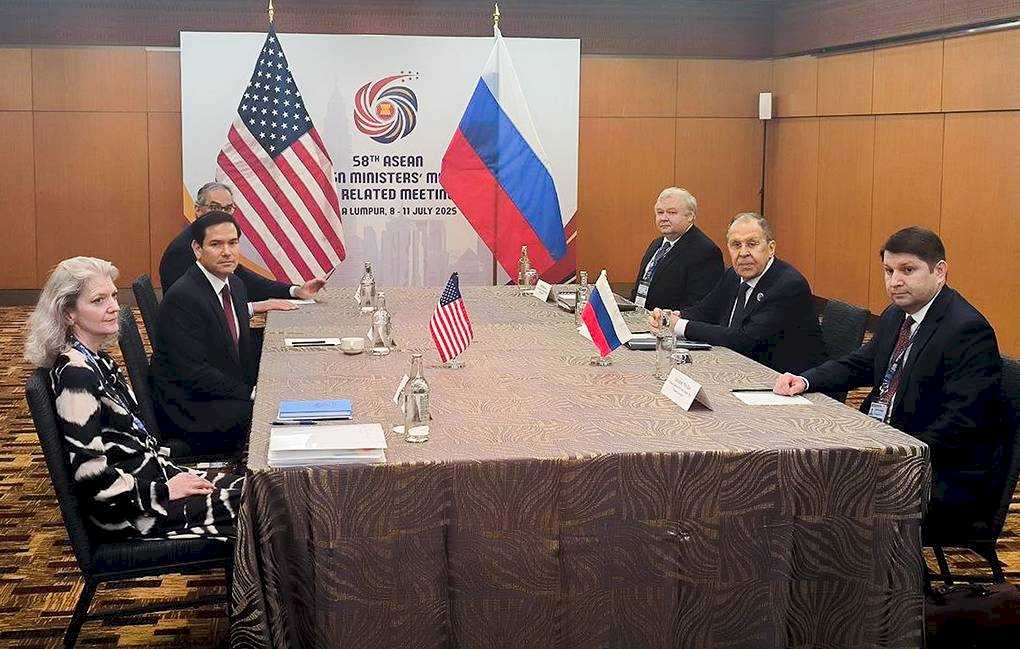
View 211 times
#Mali selling gold from mine seized from Canadian firm. Authorities in junta-led Mali are selling gold from a major mine seized from Canadian firm Barrick last month, with the aim of restarting operations, official sources told AFP Thursday.
A court ruled in June that the western Loulo-Gounkoto mine, one of the world’s largest gold complexes, would be managed for six months by a government appointed official instead of the Toronto-based firm.
No mining had taken place at Loulo-Gounkoto since January when Malian authorities seized some three tonnes of gold from the mine’s reserves.
The new administrator is selling some gold stock to finance the restarting of operations, an economy ministry source told AFP.
The Malian government and Barrick have been at loggerheads as Bamako attempts to assert greater control of its riches, including by raising royalties from foreign miners.
Mali authorities have accused Barrick of failing to pay hundreds of millions of dollars in taxes.
A mining ministry source told AFP the gold sale is part of an attempt by the new administrator to manage financial issues including salary arrears.
The sources did not indicate how much gold has been sold.
Barrick has an 80 per cent stake in the Loulo-Gounkoto complex, while the Malian state holds the rest.
“While Barrick’s subsidiaries remain the legal owners of the mine, operational control has been transferred to an external administrator”, Barrick confirmed last month following the court decision.
It said arbitration had started through the International Centre for Settlement of Investment Disputes, a World Bank arbitration panel.
One of the poorest countries in the world, Mali is ruled by a junta which came to power in back-to-back coups in 2020 and 2021.
Loulo-Gounkoto, in western Mali near the border with Senegal, was opened two decades ago and the first gold from underground operations was produced in 2011.
According to the trade publication Mining Technology, the mine contributed around $1 billion to the Malian economy in 2023.
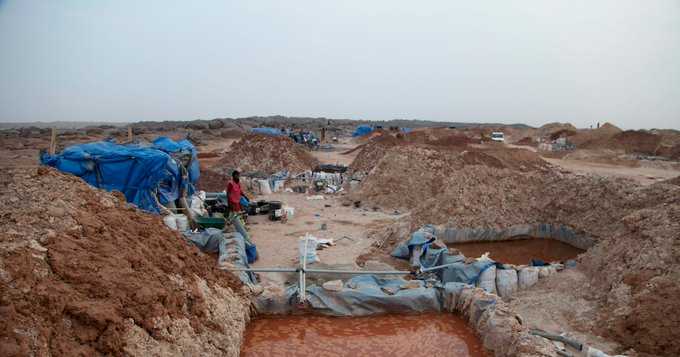
View 205 times
#Trump praises Liberian leader on English - his native tongue. U.S. President Donald Trump complimented the president of Liberia Wednesday on his English-speaking skills - despite English being the official language of the West African nation.
Trump was hosting a White House lunch with African leaders Wednesday, and -- after brief remarks from President Joseph Boakai - asked the business graduate where he had picked up his linguistic know-how.
“Thank you, and such good English... Where did you learn to speak so beautifully? Where were you educated?” Trump said.
Boakai - who, like most Liberians, speaks English as a first language - indicated he had been educated in his native country.
He was facing away from the media, making his countenance hard to gauge - but his laconic, mumbled response hinted at awkwardness.
Trump, who was surrounded by French-speaking presidents from other West African nations, kept digging.
“It’s beautiful English. I have people at this table can’t speak nearly as well,” he said.
US engagement in Liberia began in the 1820s when the Congress- and slaveholder-funded American Colonization Society began sending freed slaves to its shores.
Thousands of “Americo-Liberian” settlers followed, declaring themselves independent in 1847 and setting up a government to rule over a native African majority.
The country has a diverse array of indigenous languages and a number of creolized dialects, while Kpelle-speakers are the largest single linguistic group.
Boakai himself can read and write in Mendi and Kissi but converses in Liberia’s official tongue and lingua franca -- English.
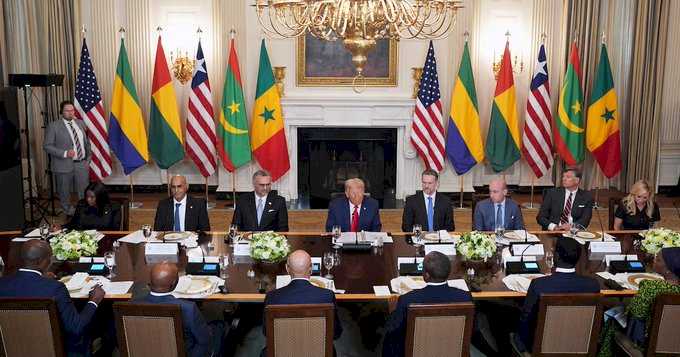
View 209 times
#Russia blasts #Kyiv with another missile and drone barrage, killing at least 2.
In another tense and sleepless night for Kyiv residents, with many of them dashing in the dark with children and blankets to the protection of subway stations, at least 16 people were wounded, according to Tymur Tkachenko, head of the Kyiv Regional Administration.
The night was punctuated with the chilling whine of approaching drones that slammed into residential areas, exploded and sent balls of orange flames into the dark during the 10-hour barrage. Russia fired 397 Shahed and decoy drones as well as cruise and ballistic missiles at Kyiv and five other regions, authorities said.
“This is a clear escalation of Russian terror: hundreds of Shahed drones every night, constant missile strikes, massive attacks on Ukrainian cities,” President Volodymyr Zelenskyy said in a Telegram post.
Russia aims to sap Ukrainian morale
Russia has recently sought to overwhelm Ukraine’s air defences with major attacks that include increasing numbers of decoy drones. The previous night, it fired more than 700 attack and decoy drones, topping previous nightly barrages for the third time in two weeks.
“The continued increase in the size of strike packages is likely intended to support Russian efforts to degrade Ukrainian morale in the face of constant Russian aggression,” the Institute for the Study of War, a Washington-based think tank, said late Wednesday.
In tandem with the bombardments, Russia’s army has started a new drive to break through parts of the 1,000-kilometre (620-mile) front line, where short-handed Ukrainian forces are under heavy strain at what could prove to be a pivotal period of the war.
“At present, the rate of Russian advance is accelerating and Russia’s summer offensive is likely to put the armed forces of Ukraine under intense pressure,” Jack Watling, a senior research fellow at military think tank RUSI, wrote in an assessment published Wednesday.
The pressure has caused alarm among Ukrainian officials, who are uncertain about continuing vital military aid from the United States and U.S. President Donald Trump’s policy toward Russia.
“Partners need to be faster with investments in weapons production and technology development,” Zelenskyy said Thursday. “We need to be faster with sanctions and put pressure on Russia so that it feels the consequences of its terror.”
Some Ukrainians lose almost everything
In Kyiv, Karyna Holf, 23, was in the living room near the window when she heard a whistling sound from the incoming weapon. Moments later, little was left of the room but debris.
“After such a shock, when you know from your own experience what it’s like to lose everything,” she said. “I don’t even know what comes next. All I have now is a backpack, a phone, a winter coat — that’s it. This is my whole life now.”
Holf said she was grateful to have her parents to turn to, but added, “There are people who have no one at all.”
One Kyiv subway station worker said more than 1,000 people, including 70 children, took refuge there. One of them was 32-year-old Kyiv resident Alina Kalyna.
“The drone attacks a year ago were one thing, and now they’re a completely different thing. We’re exhausted,” she said. ”I sleep poorly, I recover poorly, in fact I no longer recover, I am just somehow on a reserve of energy, of which I have a little left, I just somehow live and exist,” Kalyna said.
5,000 drones produced a month
The drone barrages are unlikely to let up. Russia is now producing more and better drones, including some using artificial intelligence technology, according to the Atlantic Council. Its factories are producing more than 5,000 drones a month, the Washington-based think tank said this week.
“For the first few years of the war following (Russia’s) 2022 invasion, Ukraine’s dynamic tech sector and vibrant startup culture helped keep the country a step ahead of Russia despite the Kremlin’s far greater resources,” the Atlantic Council said of the countries’ drone development. “In recent months, however, it has become increasingly apparent that the initiative has passed to Moscow.”
Ukraine urgently needs more interceptor drones to take down Russia’s Shaheds as well as Patriot missile systems to counter Russian missiles.
The U.S. has resumed deliveries of certain weapons, including 155 mm munitions and precision-guided rockets known as GMLRS, two U.S. officials told The Associated Press on condition of anonymity so that they could provide details that hadn’t been announced publicly. It’s unclear exactly when the weapons started moving.
___
Tara Copp contributed to this report from Washington.
Vasilisa Stepanenko And Hanna Arhirova, The Associated Press
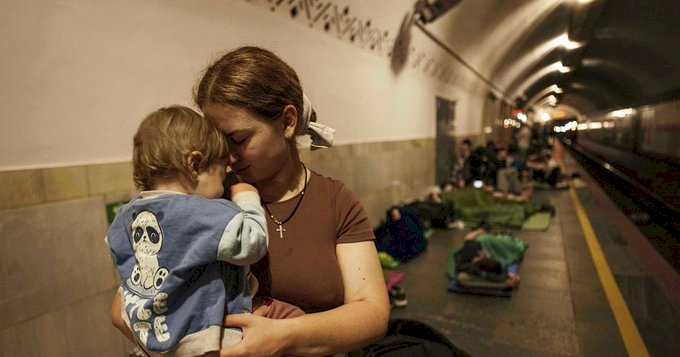
View 206 times
King Charles III and Emmanuel Macron both hailed a new era in UK-France relations as the French president began a three-day formal visit to Britain.
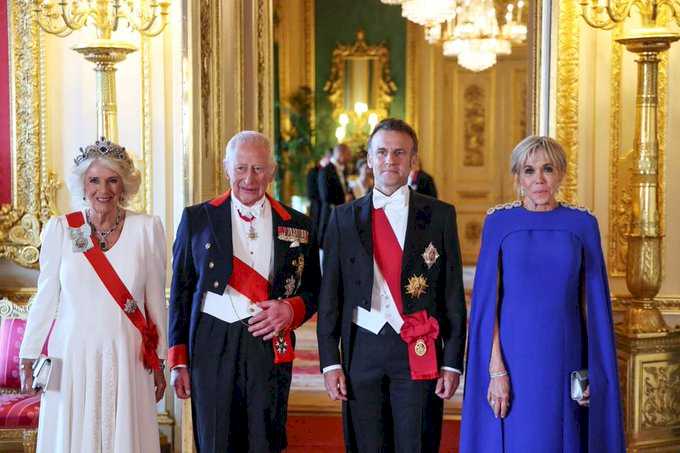
View 200 times
Sean “Diddy” Combs will be sentenced on 3 October for his conviction on prostitution-related charges, following a split verdict that saw him acquitted for crimes that carried more serious punishment.

View 200 times
Man scales Paris building to save children from fire in daring rescue.
A man is being hailed a hero after risking his life to save six people — including two infants — from a burning apartment in the northern district of Paris last week.
In a video shared by a TikTok user, 39-year-old Fousseynou Cissé was seen standing on a narrow ledge of a sixth-floor window as smoke billowed.
Cissé went to the neighbouring apartment, climbed out of the window and stood 20 metres high on a railing linking the two units.
As panic erupted, Cissé calmly urged two families trapped inside to pass their children out the window.
The footage, reportedly taken July 4, showed him helping two babies to safety through a nearby window before assisting four other people from the smoke-filled apartment.
According to Cissé, the evacuated children were handed over through a window by their mothers and passed to the neighbour in an adjacent apartment. Cissé then helped the two mothers to safety.
“I didn’t ask myself the question. There were lives at stake, I didn’t calculate,” Cissé told French news outlet Le Parisien.
His bravery didn’t go unnoticed, as he received a personal call of praise from French President Emmanuel Macron, who commended him for his heroic actions, according to Le Parisien.
Paris police chief Laurent Nunez said on Monday that he would be awarding Cissé a medal “in recognition of his courage and dedication.”
His is also expected to be formally honoured by the city of Paris.
With files from The Associated Press
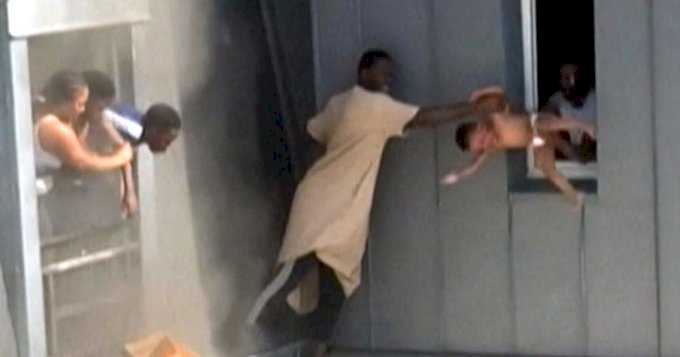
View 203 times
#Netanyahu says he nominated Trump for a Nobel Peace Prize. From there, it’s a secretive process.
U.S. President Donald Trump has been nominated again for the Nobel Peace Prize.
Israeli Prime Minister Benjamin Netanyahu told Trump on Monday that he recommended him for the prestigious award, handing the American leader the letter he said he sent the Nobel committee.
Trump has been nominated several times by people within the U.S. as well as politicians abroad — but that’s only one small step in the secretive process.
Trump’s previous nominations
Trump’s nominators have included a group of U.S. House Republicans and two Norwegian lawmakers. The groups separately nominated him in 2018 for his work to ease nuclear tensions with North Korea. One of the Norwegians nominated him again for the 2021 prize for his efforts in the Middle East, as did a Swedish lawmaker.
Not all of the nominations have been valid: The Norwegian Nobel Committee, which selects the prize winners, said in 2018 that someone using a stolen identity had nominated Trump at least twice.
Nominations can be made by a select group of people and organizations, including heads of state or politicians serving at a national level, university professors, directors of foreign policy institutes, past Nobel Prize recipients and members of the Norwegian Nobel Committee itself.
Secret process
Once all nominations have come in, the committee — made up of five members appointed by the Norwegian parliament — sifts through them and ensures they were made by an eligible nominator.
A person cannot nominate themselves, according to the committee.
The nominations aren’t announced by the committee, and the Nobel statutes prohibit the judges from discussing their deliberations for 50 years. But those doing the nominating may choose to make their recommendations public.
Nominations must be submitted before Feb. 1 each year — meaning any recent Netanyahu nomination would be for the 2026 prize. The winners are announced every October, with award ceremonies taking place on Dec. 10, the anniversary of Nobel’s death.
The prizes in medicine, physics, chemistry, literature and peace were established by the will of Alfred Nobel, a wealthy Swedish industrialist and the inventor of dynamite. An economics prize was later established by Sweden’s central bank and is presented at the same time.
How to win the peace prize
According to Nobel’s wishes, the peace prize should go to “the person who shall have done the most or the best work for fraternity between nations, for the abolition or reduction of standing armies and for the holding and promotion of peace congresses.”
The peace prize committee is the only one that regularly rewards achievements made in the previous year — and the prize is the only one awarded in Oslo, Norway. For the science-related prizes, scientists often have to wait decades to have their work recognized by the Nobel judges, who want to make sure that any breakthrough stands the test of time, in Stockholm.
Former U.S. President Barack Obama won the peace prize in 2009, barely nine months into his first term. It was met with fierce criticism in the U.S., where many argued Obama had not been in office long enough to have an impact worthy of the Nobel.
Former U.S. President Jimmy Carter won a Nobel Peace Prize in 2002 for work he did after leaving the White House.
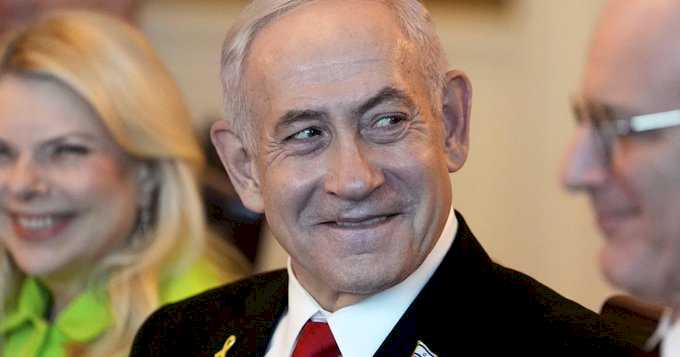
View 209 times
Global News on Umojja.com